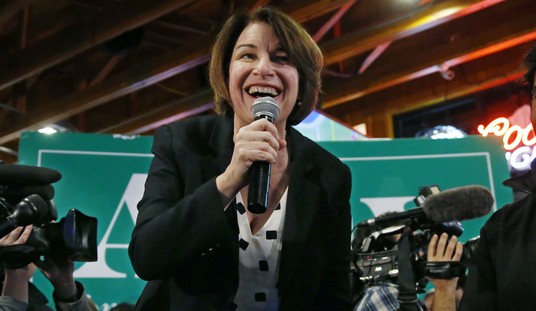While Obama was rubbing shoulders with noted bigot Al Sharpton, House conservatives have been working arduously to formulate a coherent budget and stave off the impending debt crisis. Earlier this week, Paul Ryan bravely offered the first steps toward achieving fiscal solvency and vitiating dependency on government. Ryan’s diligence has provided the groundwork for a debate among conservatives as to how best reinstate the ideals of limited government and free market capitalism.
Today, the conservative Republican Study Committee (RSC), under the strong leadership of Congressmen Jim Jordan, Scott Garrett, Mick Mulvaney, and Tom McClintock, expanded upon Ryan’s work by offering their budget blueprint, Honest Solutions. This proposal will be introduced as a floor amendment to Ryan’s budget resolution next week.
Overall, the RSC budget cuts $9.078 trillion over the next decade compared to the CBO baseline, or $3.3 trillion more than Ryan’s plan. Due in large part to its heavier cuts in discretionary spending, the RSC budget cuts an additional $207 billion from the FY 2012 budget compared to Ryan’s budget. The RSC budget uses the same baseline assumptions from the CBO in ascertaining revenue levels and future economic conditions.
Here is a summary of differences between Ryan’s Pathway to Prosperity and the RSC’s Honest Solutions.
- Discretionary Spending: The RSC proposal would trim FY 2012 total discretionary spending down to 2006 levels-a $141 billion cut from the last budget passed in 2010. The subsequent 9 years of total discretionary spending would be frozen at 2008 levels-$933 billion annually.
Defense Spending (which is the largest share of discretionary spending) would be $696 billion in 2012 and gradually increase to $747 billion in 2021. This is comparable to the spending levels in Ryan’s budget. Put another way, non-defense discretionary spending would be reduced from $409 billion in 2012 to $218 billion in 2021. Much of these sharper cuts in non-defense discretionary spending would be based off of the specific cuts that were proposed in the RSC Spending Reduction Act introduced in January. That bill contained $2.5 trillion in spending cuts over the next decade. Other cuts would be achieved by reducing the federal workforce by 15%.
- Medicaid: The RSC plan adopts the same laudable block grant and mandatory cap program for Medicaid that is proposed in the House budget. The difference is that the RSC pegs its spending level to 2006, providing increases only for inflation. Ryan’s budget increases the spending level slightly more every year. Consequently, Honest Solutions achieves an extra $712 billion in Medicaid savings over 10 years.
- Medicare: Again, the RSC plan takes Ryan’s premium support proposal and accelerates it in order to achieve more front loaded savings. Their plan fundamentally differs from the House plan in three ways. First, their premium support plan would only be optional, thus offering the Medicare recipient the option to stay on the current system or opt for the more free market oriented plan. * On the other hand, unlike the House plan, this plan would allow even current Medicare recipients to opt for the premium support program any time after 2017. More importantly, the premium support option begins in 2017, well within the 10 year budget frame. Ryan’s version would delay the reforms for an extra four years.
The third and most significant difference is that the RSC gradually raises the eligibility age for anyone born after 1952- two months for every year between 2017 and 2028. For example, a current 59 year-old will be eligible for Medicare in 2017 when he/she reaches the age of 65 and 2 months. The age would incrementally increase another two months per year until the eligibility age maxes out at 67 for those born in 1963 and retiring in 2028. Accordingly, the RSC budget would net an extra $1.2 trillion in Medicare savings.
- Social Security: This is perhaps the most significant addition to the current House budget proposal. The RSC is calling for a gradual increase in the retirement age for those 59 years-old or younger. Much like their Medicare proposal, the SS plan would raise the retirement age in two-month-per-year increments starting with those born in 1952 and ending with those born in 1975-until the age is 70. In other words, those born in 1952 would retire at 66 and two months; those born in 1957 would retire at 67; those born after 1975 would retire at 70. These changes to SS would net an extra $56 billion in savings just in the last 8 years of the 10 year budget frame.
Parenthetically, as an editorial note, RSC leaders confirmed their ideological commitment to private accounts, but asserted that the cost of conversion would be too high to implement at this point. From a conservative perspective, we hope that as the budget deficits begin to decline, we can once again place private accounts on the table. It will be much easier to tell a 25 year-old that he has to work until 70 for his retirement if he is able to retain private property rights and full control over at least part of his retirement. We should not give up on private accounts yet.
- Welfare Reform: Democrats like to ignore the litany of “other mandatory spending” expenditures when discussing mandatory spending. The category containing other mandatory spending is actually increasing more rapidly than Social Security and Medicare. To that end, the RSC seeks to build upon Ryan’s block grant proposal to the Food Stamp program by capping spending to 2007 levels, saving $45 billion in 2012 and $350 billion over 10 years. In addition, the plan calls for more accountability, cuts, and caps in almost a dozen more welfare and student loan programs.
SSI: One of the best innovations of the RSC budget is their proposed reform for the Supplemental Security program (SSI). In recent years, the program has been used to radically expand the number of beneficiaries and has muddled up the SS Trust Fund. The RSC is proposing to block grant SSI to the states and cap its expenditures to 2007 levels.
- Energy Production and Federal Land: The RSC plan opens all federal lands, including ANWR, to drilling. The auction proceeds from oil and gas companies would generate $5 billion in revenue over 10 years. They also propose to sell 5% of federal lands, resulting in $140 billion savings over 10 years. They also call for a 10% reduction in our Strategic Petroleum Reserve, netting $7 billion in additional savings.
- Taxes: In addition to the corporate and income tax reductions proposed in Ryan’s budget, the RSC plan makes the Bush tax cuts permanent and proposes a permanent fix to the AMT monster.
- Balanced Budget: Whereas Paul Ryan’s plan would fail to balance the budget for another 26 years, the RSC plan balances the budget in just 9 years. Beginning in 2021, their proposal would net budget surpluses for each subsequent year. The reason is that the RSC budget would result in $4.9 trillion in deficit reduction, while the Ryan budget would only result in $1.65 trillion in deficit reductions. Also, under the RSC plan, government only grows 1.7% annually. Ryan’s plan would grow government by 2.8%.
Conclusion
Cross-posted to Red Meat Conservative
*Clarification/Correction: Both the House budget and RSC blueprint would fully transition all Medicare recipients to the premium support system beginning in 2017. The difference is that under the RSC plan, even existing enrolees (those who are currently 60 or older) may opt into the new plan. The House budget plan does not offer existing recipients that option.














Join the conversation as a VIP Member